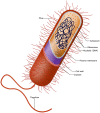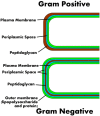Hand sanitizers: A review of ingredients, mechanisms of action, modes of delivery, and efficacy against coronaviruses
- PMID: 32565272
- PMCID: PMC7301780
- DOI: 10.1016/j.ajic.2020.06.182
Hand sanitizers: A review of ingredients, mechanisms of action, modes of delivery, and efficacy against coronaviruses
Abstract
Background: The emergence of the novel virus, SARS-CoV-2, has posed unprecedented challenges to public health around the world. Currently, strategies to deal with COVID-19 are purely supportive and preventative, aimed at reducing transmission. An effective and simple method for reducing transmission of infections in public or healthcare settings is hand hygiene. Unfortunately, little is known regarding the efficacy of hand sanitizers against SARS-CoV-2.
Methods: In this review, an extensive literature search was performed to succinctly summarize the primary active ingredients and mechanisms of action of hand sanitizers, compare the effectiveness and compliance of gel and foam sanitizers, and predict whether alcohol and non-alcohol hand sanitizers would be effective against SARS-CoV-2.
Results: Most alcohol-based hand sanitizers are effective at inactivating enveloped viruses, including coronaviruses. With what is currently known in the literature, one may not confidently suggest one mode of hand sanitizing delivery over the other. When hand washing with soap and water is unavailable, a sufficient volume of sanitizer is necessary to ensure complete hand coverage, and compliance is critical for appropriate hand hygiene.
Conclusions: By extrapolating effectiveness of hand sanitizers on viruses of similar structure to SARS-CoV-2, this virus should be effectively inactivated with current hand hygiene products, though future research should attempt to determine this directly.
Keywords: COVID-19; Foam; Gel; Hand hygiene; SARS-CoV-2.
Copyright © 2020 Association for Professionals in Infection Control and Epidemiology, Inc. Published by Elsevier Inc. All rights reserved.
Figures



Similar articles
-
Evaluation of World Health Organization-Recommended Hand Hygiene Formulations.Emerg Infect Dis. 2020 Sep;26(9):2064-2068. doi: 10.3201/eid2609.201761. Epub 2020 May 27. Emerg Infect Dis. 2020. PMID: 32459621 Free PMC article.
-
Hand hygiene in preventing COVID-19 transmission.Cutis. 2020 May;105(5):233-234. Cutis. 2020. PMID: 32603385 No abstract available.
-
Synergistic effects of anionic surfactants on coronavirus (SARS-CoV-2) virucidal efficiency of sanitizing fluids to fight COVID-19.Food Chem Toxicol. 2020 Nov;145:111702. doi: 10.1016/j.fct.2020.111702. Epub 2020 Aug 26. Food Chem Toxicol. 2020. PMID: 32860861 Free PMC article.
-
Hidden threat lurking behind the alcohol sanitizers in COVID-19 outbreak.Dermatol Ther. 2020 Jul;33(4):e13627. doi: 10.1111/dth.13627. Epub 2020 Jun 7. Dermatol Ther. 2020. PMID: 32436262 Free PMC article. Review.
-
Hand Hygiene Among Health Care Workers During COVID-19 Pandemic: Challenges and Recommendations.Dermatitis. 2020 Jul/Aug;31(4):233-237. doi: 10.1097/DER.0000000000000639. Dermatitis. 2020. PMID: 32568806 Review.
Cited by
-
Hydrogels in Hand Sanitizers.Materials (Basel). 2021 Mar 24;14(7):1577. doi: 10.3390/ma14071577. Materials (Basel). 2021. PMID: 33804917 Free PMC article. Review.
-
Skin Reactions to Personal Protective Equipment among First-Line COVID-19 Healthcare Workers: A Survey in Northern Morocco.Ann Work Expo Health. 2021 Oct 9;65(8):998-1003. doi: 10.1093/annweh/wxab018. Ann Work Expo Health. 2021. PMID: 33876214 Free PMC article.
-
Microbicidal actives with virucidal efficacy against SARS-CoV-2 and other beta- and alpha-coronaviruses and implications for future emerging coronaviruses and other enveloped viruses.Sci Rep. 2021 Mar 11;11(1):5626. doi: 10.1038/s41598-021-84842-1. Sci Rep. 2021. PMID: 33707476 Free PMC article.
-
Determination and Quantification of Acetaldehyde, Acetone, and Methanol in Hand Sanitizers Using Headspace GC/MS: Effect of Storage Time and Temperature.Int J Environ Res Public Health. 2024 Jan 9;21(1):74. doi: 10.3390/ijerph21010074. Int J Environ Res Public Health. 2024. PMID: 38248538 Free PMC article.
-
Sensitivity of SARS-CoV-2 towards Alcohols: Potential for Alcohol-Related Toxicity in Humans.Life (Basel). 2021 Dec 3;11(12):1334. doi: 10.3390/life11121334. Life (Basel). 2021. PMID: 34947865 Free PMC article. Review.
References
-
- Coronavirus disease 2019 (COVID-19) Situation Report-101. 2020. Available at: https://www.who.int/docs/default-source/coronaviruse/situation-reports/2.... Accessed July 10,2020.
-
- Pittet D, Allegranzi B, Boyce J. The World Health Organization guidelines on hand hygiene in health care and their consensus recommendations. Infect Control Hosp Epidemiol. 2009;30:611–622. - PubMed
-
- Boyce JM, Pittet D, Healthcare Infection Control Practices Advisory Committee. Society for Healthcare Epidemiology of America. Association for Professionals in Infection Control. Infectious Diseases Society of America. Hand Hygiene Task Force Guideline for hand hygiene in health-care settings: recommendations of the healthcare infection control practices advisory committee and the HICPAC/SHEA/APIC/IDSA hand hygiene task force. Infect Control Hosp Epidemiol. 2002;23(12 Suppl):S3–40. - PubMed
-
- Gold NA, Avva U. StatPearls Publishing; 2018. Alcohol Sanitizer. Available at: http://www.ncbi.nlm.nih.gov/pubmed/30020626. Accessed July 10,2020. - PubMed
-
- Wentworth AB, Yiannias JA, Davis MDP, Killian JM. Benzalkonium chloride: a known irritant and novel allergen. Dermatitis. 2016;27:14–20. - PubMed
Publication types
MeSH terms
Substances
LinkOut - more resources
Full Text Sources
Other Literature Sources
Medical
Miscellaneous

